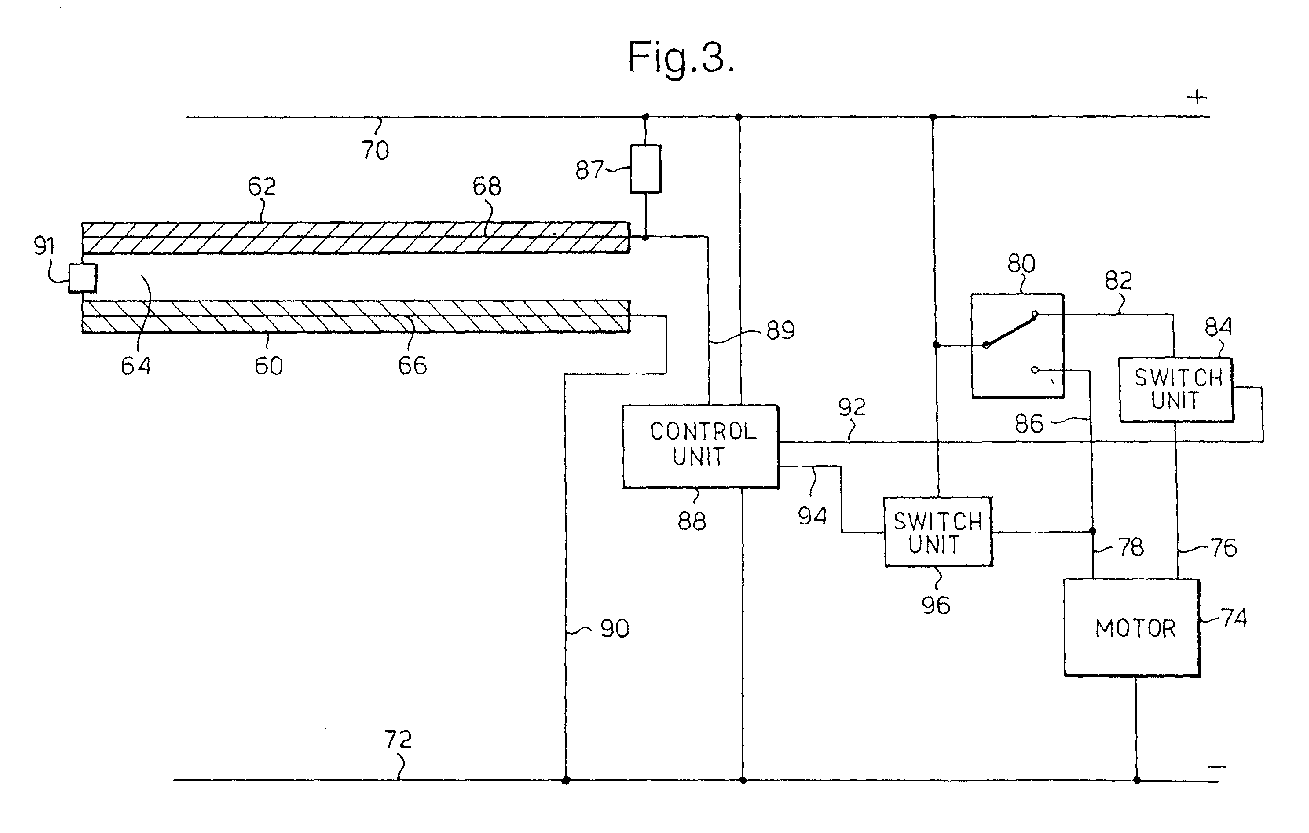(57) Apparatus responsive to an obstruction in the window opening of a power-driven window
in a motor vehicle comprises two electrically conductive strips (60,62) embedded in
and running along a flexible window channel in the top of the frame of the window
opening. The conductive strips (60,62) are normally held spaced apart. A small electrical
current flows through the conductive strips (60,62) via high value resistors (87,91).
One of these resistors (91) interconnects one of the ends of one of the conductive
strips (60) to the corresponding end of the other strip (62). A control unit (88)
monitors the electrical potential difference across the other ends of the strips (60,62).
An obstruction carried upwardly in the window opening by the closing window will move
the conductive strips (60,62) into contact with each other, and will be detected by
the fall in potential difference across the ends of the strips (60,62) connected to
the control unit (88). Any electrical discontinuity in the strips (60,62) will interrupt
the small current flowing through them, and this also will be detected by the control
unit (88). The resistor (91) is formed by treated elastomeric material and can be
placed in electrical contact with and between the ends of the strips (60,62) such
as by an injection process or by adhesive, eliminating the need for an inefficient
soldering or similar operation.
|

|
